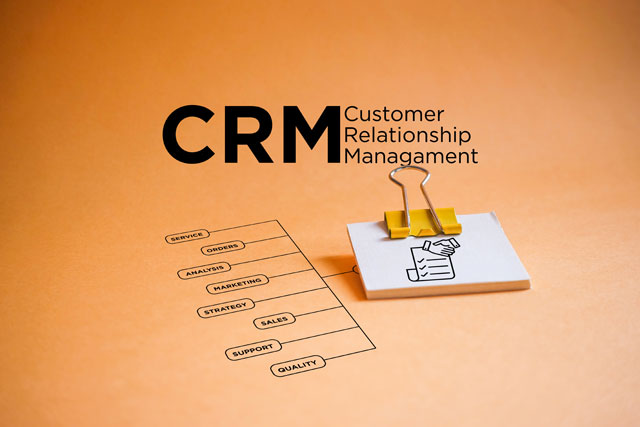A Vendor is a person or company who supplies merchandise to a retail store, generally at a wholesale price.
In order to have merchandise, you have to find the source for your merchandise. Most vendors have catalogs and sales representatives. The best way to find a vendor is to identify your retail business and the sort of merchandise you intend to sell. If you want to sell shoes, for example, finding a vendor can be as easy as finding and attending a regional market or conference. Most of these events are two to ten day events. There are also vendor markets that are always open.
At these events your potential vendors will have tables and booths set up to display their merchandise. Your job is to register for the conference or exhibit. In order to do this, you must have proof that you are in business, so it pays to get your business license early, order your business cards and letterhead stationery even before you intend to go into business. Without proof that you are in business, you are seen as a retail buyer and not as a wholesale buyer.
A retail buyer is a person who shops at retail stores. Your customers will all be retail buyers, and they will pay the full retail price for your merchandise. A wholesale buyer is you, the business owner. You need to purchase your merchandise at a wholesale price, which is anywhere from 30 to 50 percent less than you will eventually sell it. This is how you make money.
All conferences will have different requirements as proof that you are truly in business and are a wholesale buyer, but the minimum will be your Federal Tax ID number, your local business license, and at least a business card. This is for your protection as a wholesale buyer. My first experience at a market was a whirlwind, and fortunately I went with a seasoned buyer, otherwise I would have been tremendously intimidated. As I learned the tricks of the trade, I began to understand how the process works and my fears disappeared.
All sorts of wholesale markets and conferences are listed in the business magazines and trade journals of the business you intend to open. Again, this is why you need to start your research early.
I had a friend who planned to open a gift shop. After taking the business startup class at the community college, she got her Federal Tax ID Number. As she was intending to purchase merchandise and store it in her garage until she was able to open a store, she was unable to get her Business License. Because of this, she was not always able to get a wholesale order. Wholesale sellers are suspicious, and unless you actually have a business license and a place of business they will not even send a catalog. But, my friend found enough who were willing to supply her, so she was able to establish credit with those vendors, gather merchandise, and when she finally had enough, she found her storefront, got her business license and twelve years later, she is still in business.
Wendell contacts some of the nurseries that he has used in the past as a retail customer. He advises them that he intends to go into business and asks what he needs to provide in order to become a wholesale buyer. The minimum they ask is for his Federal Tax ID Number, a copy of his business license and his business address. Because Wendell intends to use his home as his business, he is able to apply and get his Federal Tax ID Number and his business license the very same day. Once he sends this information to the suppliers they, in turn, send him wholesale catalogs. Now Wendell has to decide what to buy.
As with everything else, evaluate all of your suppliers.
-
Compare their terms.
-
What they offer.
-
What they promise.
-
What their minimum orders are.
-
What a minimum re-order is.
-
How they handle shipping or merchandise problems.
-
Do they guarantee on-time delivery?
-
Are their products already bar-coded?
-
Knowledgeable staff
-
Knows the industry
-
Communication
-
Pricing
-
Support
Most first-time business owners have a tendency to buy only what they happen to like or want. This is a dangerous practice. As a retail business owner, you have to make choices that will appeal to hundreds, even thousands, of your customers. As such, you will make decisions about merchandise that need to appeal to all of your customers. They rely on you to make choices that will appeal to them.
This is one of your biggest challenges as a retailer. The customer is fickle. What they bought last week, last month, or last year is no longer the item they wish to buy today. That is why it is critical to pay attention to your purchasing habits, and your customers' buying habits. The best retailers study their customers, so that they can understand what they like now, and why.
Knowing that his future potential customers may have differing needs than his own personal needs, Wendell decides to spend a lot of time around nursery/garden centers and do some people watching. In order to keep his future competitors from getting suspicious of his behavior, Wendell chooses a location that is about an hour's drive from his home. As Wendell shops at those garden centers, he discovers that people are looking for good quality products for a good price. He also finds that many people who garden for themselves are looking for smaller sized containers. He heard many times that they do not want to dig a hole for a five-gallon plant. This surprises Wendell, he expected to have to purchase more mature plants so that people can have a more mature garden right away. This is good news for Wendell, his business will be able to turn a profit faster because it takes time or money to get larger plants. He realizes that he can start with smaller plants and appeal to the needs of his customers.
By paying cash, you can expect a small discount, and this is why many new businesses will pay C.O.D. upon delivery. There is no risk to the supplier as they get their money as soon as the products are delivered.
For the novice business owner, setting prices can be an intimidating issue. There is a process called establishing price points that can help you make such decisions.
Price points are a classification of price amounts you intend to use in your store. Developing price point discipline will help you to purchase only those items that fall within your price point range and not be tempted into purchasing a few things that are outside of it. Your customers will become used to your price ranges in this way, and somehow this gives them a sense of comfort and stability.
Your customer will know what to expect after they have been in your store one time. By you setting price points for yourself, you will not be tempted to try to carry a little bit of everything for everybody. This is a sure way to going out of business.
Wendell has gardened all his life, and has a very good idea of what he was willing to spend on a plant to put in his garden. He also knows that by providing bedding plants that are in slightly longer containers the success of the customer is improved because the plant has more and longer root systems. Because of this, he decides that he will price his small annual bedding plants at $2.49 per plant. This is his low price point. He knows that this is a little more expensive than his competitors, but once they discover the improved plant performance, he knows that they will be willing to spend a little extra. In all likelihood, Wendell will sell more of these plants than anything else. As the sizes of the containers increases, Wendell determines that he will carry plants in the $3.49, $9.99, $14.99, $24.99, and $44.99 price point ranges. He will carry fewer of the higher price point items and the majority of his stock will be in the $2.49 to $14.99 price point ranges.
Designing the Store
In order to sell, you must display your items in such a way that your customers find it appealing and interesting. The idea is to entice them into buying because it looks so good.
It is also subliminal suggestive selling because you often will put certain things together that are so complementary that your customer is unable to choose only one part of the display for their purposes.
The idea behind a unique image is to give your customers a feeling or flavor of what your store is all about. Many times you will have customers who will only see you by looking through your windows during the hours that you are closed. If they can get a feeling about the store that is not appealing to them, then they will likely never stop in and visit. If you create a truly pleasing and attractive store, they will remember and make a point to come in when you are open.
Because of this, your windows should never be used as a storage area or a stockroom. Your windows are critical in creating that vital first impression, and are often considered to be some prime territory for your storefront. The store window is where you can showcase a single, eye-catching product, or set up a scene, or somehow tell a story. Tiffany and Company in New York City has hired window dressers for their Holiday Window displays for years. These displays are known to draw thousands and thousands of viewers during the season.
Staging
Retail staging uses the entire store as a stage and creates the most productive and appealing display for the highest yield per square foot. In order for this to work, you or the person you use as your stager will take each area and arrange the inventory to show the items to their best advantage and increase sales. Staging can also help you to "brand" your store and set it apart from other stores of a similar venue.
Other staging displays feature islands of prepackaged gifts or bath and body products.
Merchandising is how you market by maximizing your sales using product selection, product design, product packaging, pricing and then the display, as discussed, to encourage your customer to buy more than they initially intended to buy.
Suggestive Selling Techniques
While this is not necessarily a physical technique, it bears discussion in terms of getting your customers to spend money�which is the entire aim of any retailing proposition.
Suggestive selling is looking at the items your customers have selected, and identifying other items that might make a good complementary purchase. Perhaps your customer has purchased several tapered candles. As you are preparing to ring up her purchase you could draw her attention to the candlestick holders that you have displayed near the register.
This is no different than the disembodied voice over the ordering intercom at McDonald's. You only want a Coke; but they will be sure to ask if you want fries with that.
Suggestive selling seems a big pushy at first, but in reality your job is to anticipate your customers' needs and by asking questions you can identify if you can help to meet those needs.
Wendell always asks if they have the pot, good potting soil, and a watering genie that helps to keep the pot watered during especially warm weather. If he has people purchasing a micro-watering system, he always asks what they are planning to water and he can frequently sell more equipment when he discovers that they intend to use more drippers than come in the kit. By discovering his clients' needs, Wendell actually is able to sell more through suggestive selling techniques.
When you practice suggestive selling techniques the idea is that you stop as soon as your customer says no. If the customer says yes, then you can suggest another item that makes perfect sense.
If your customer is buying a DVD player, the sales clerk is wise if he suggests:
-
Purchasing audio cables and video cables in order for the customer to hook up his new purchase.
-
If your customer is especially willing, suggest a DVD lens cleaner.
-
A warranty package.
-
Perhaps the latest DVDs that were just recently released.
This is called suggestive selling, and usually your customer will not be angry with you for giving him ideas that he had not considered. In fact, our customers are usually angry if they get their DVD player home and did not realize that all the cables had to be purchased independently.






























